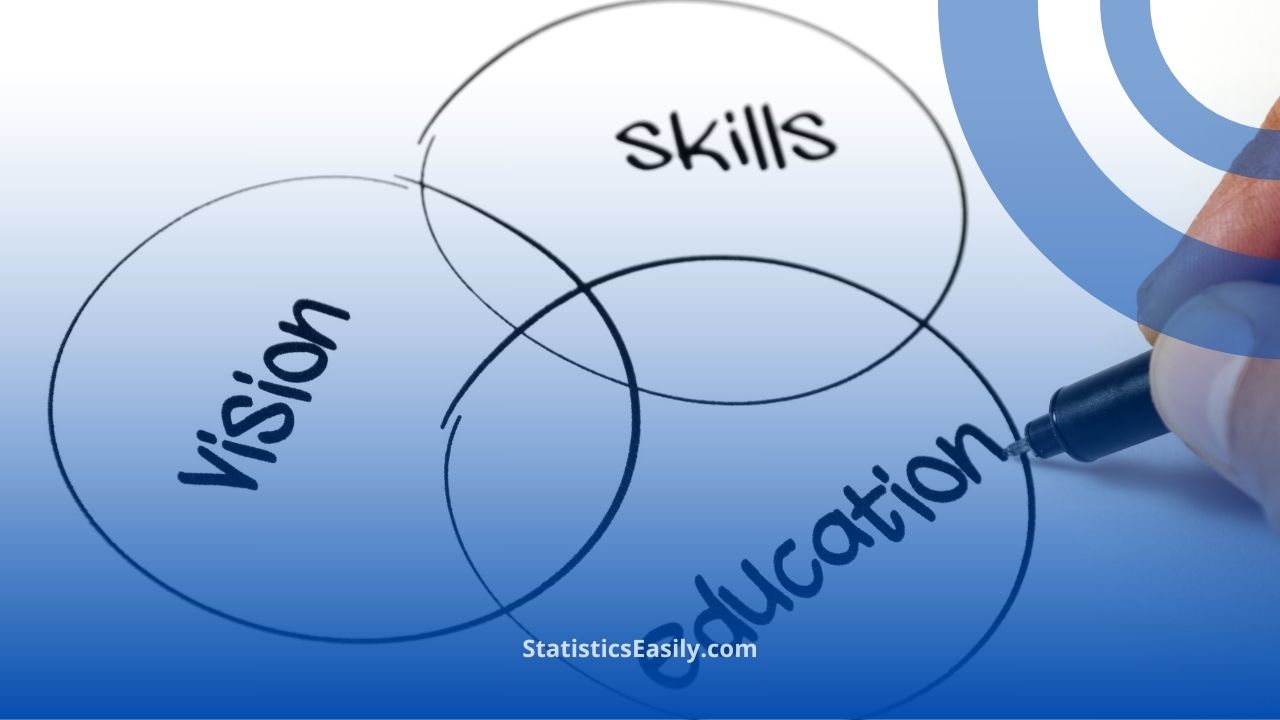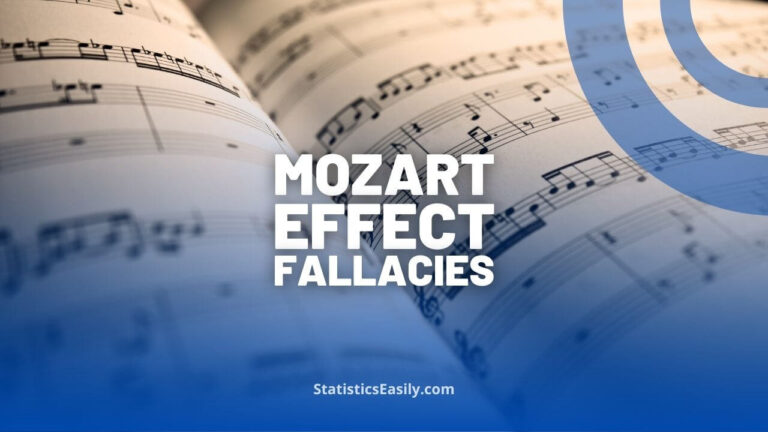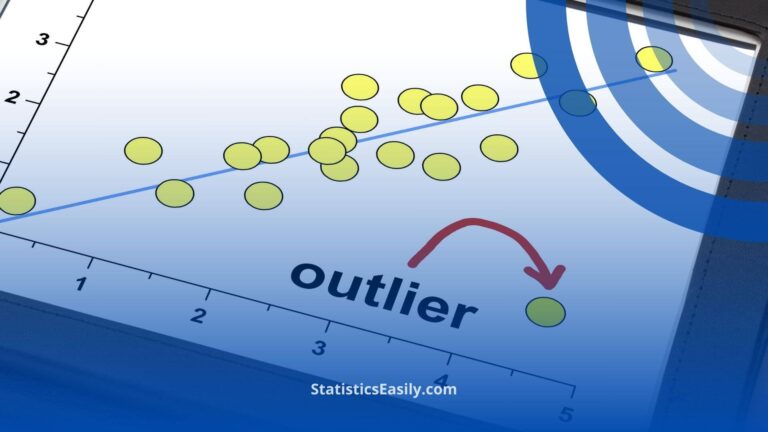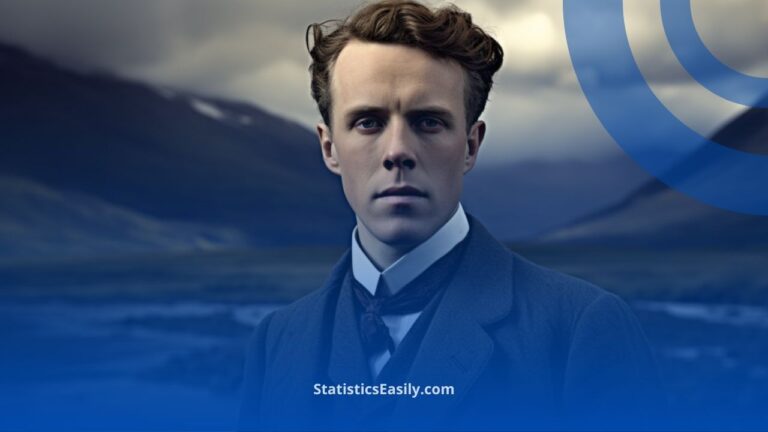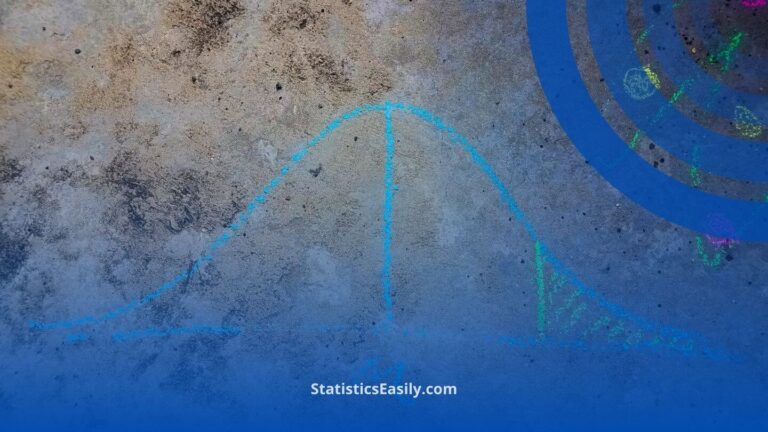The Union and Intersection of Two Sets: A Fundamental Approach to Set Analysis
In set theory, you will learn the fundamental principles and applications of the union and intersection of two sets.
Introduction
In the study of mathematics, specifically set theory, two fundamental operations are the union and intersection of sets. These operations allow us to combine different sets and find common elements. The union of two sets is a set containing all the elements of the given sets without duplication. Represented by the symbol ∪, it reflects the cumulative elements present in either or both sets. On the other hand, the intersection, denoted by ∩, is the set comprising elements shared by both sets.
Understanding the union and intersection of sets is crucial in statistical and probabilistic analysis. These concepts form the basis for calculating probabilities, analyzing data patterns, and making informed predictions in various fields, from computer science to economics. They enable researchers to clarify the relationships between different datasets and to draw conclusions from complex data. Mastering these operations enhances analytical rigor and enriches logical reasoning and mathematical thought.
In the forthcoming sections, we will detail these operations, providing clear definitions, practical examples, and visual aids to ensure a comprehensive understanding of these pivotal concepts in set theory.
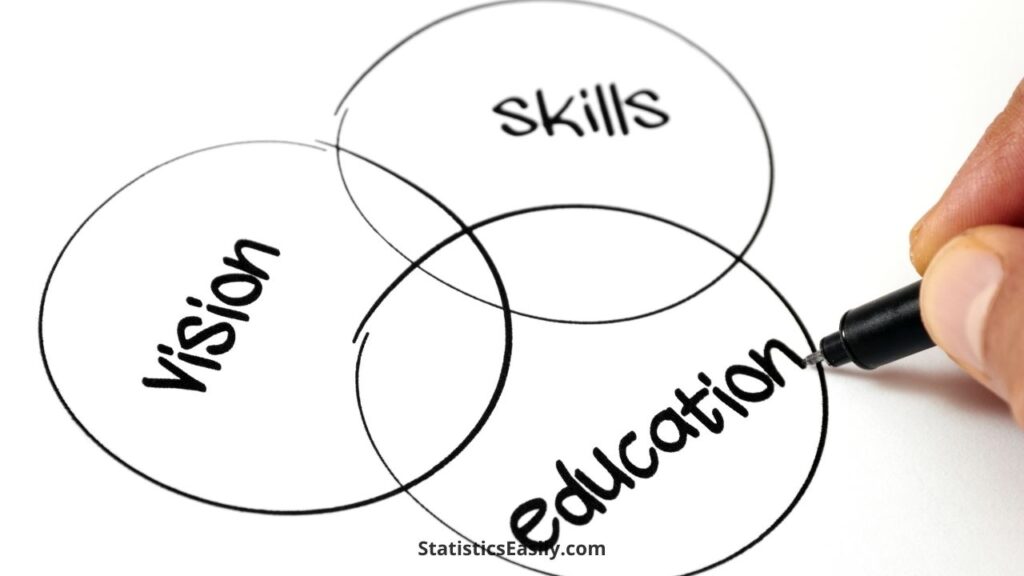
Highlights
- Unions combine elements from both sets, which helps expand dataset criteria.
- Intersections find commonalities between sets, which is critical for precise data filtering.
- Union and intersection applications extend to probability calculations and beyond.
- Set complements offer a path to understanding what is not included within a set.
- Combining set operations underpins complex data analysis and decision-making processes.
Ad Title
Ad description. Lorem ipsum dolor sit amet, consectetur adipiscing elit.
Defining Key Terms
A set is a well-defined collection of distinct objects, often called elements or members. The nature of these objects doesn’t limit the definition of a set; they can be anything from numbers and people to more abstract concepts like ideas and colors.
The union of two sets, signified by the symbol ∪, is a set containing all the distinct elements from both sets. For example, if we have Set A = {1, 2, 3} and Set B = {3, 4, 5}, the union of these sets, A ∪ B, would be {1, 2, 3, 4, 5}.
The intersection of two sets, indicated by the symbol ∩, is a set containing only the elements that are common to both sets. Continuing with our example, the intersection of Set A and Set B, A ∩ B, would be {3}.
A set’s complement includes all the elements not in the set, considering a universal set which contains all items under consideration. If the universal set U = {1, 2, 3, 4, 5, 6} and Set A = {1, 2, 3}, then the complement of Set A, denoted by A^c, would be {4, 5, 6}.
Visual aids, such as Venn diagrams, are incredibly helpful in representing these concepts. They provide a clear, graphical way to view the relationships between sets:
- A square represents the Universal Set U, containing elements {1, 2, 3, 4, 5, 6}.
- A circle within the square for Set A containing elements {1, 2, 3}.
- A circle within the square for Set B containing elements {3, 4, 5}.
- The overlapping area between circles A and B represents A ∩ B, containing element {3}.
- The combined area of circles A and B within the square represents A ∪ B, containing elements {1, 2, 3, 4, 5}.
- The area outside circle A but within the square represents A^c, containing elements {4, 5, 6}.
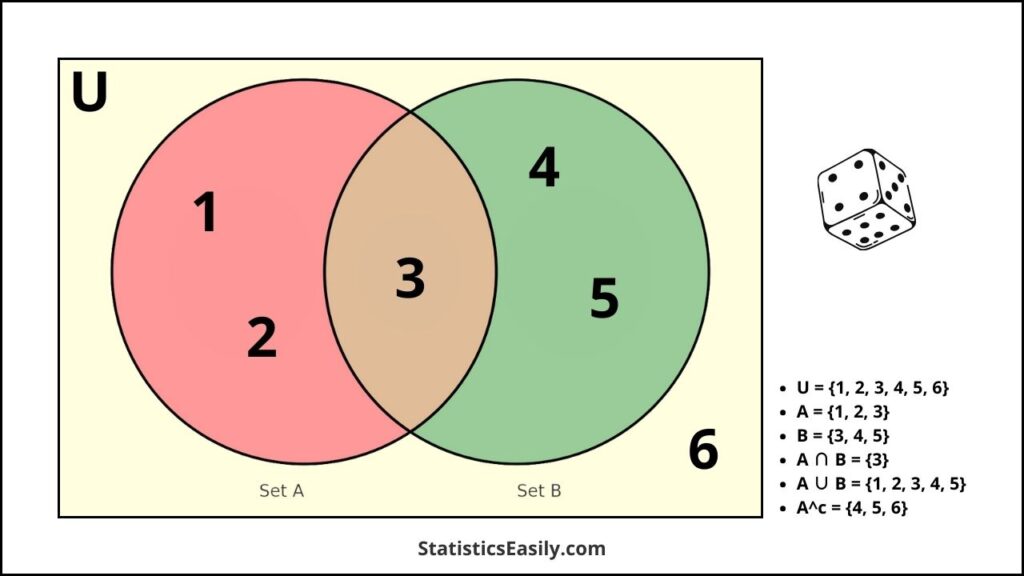
By understanding these key terms and utilizing visual aids, readers can better appreciate the structure and order inherent in set theory. This foundation is critical for those venturing into data analysis and echoes mathematical relationships’ profound and intrinsic beauty.
The Union of Two Sets
The union of two sets is defined as a set containing all the elements from both sets without duplicates. The symbol ∪ denotes the operation of the union.
For a simple example, consider Set A = {1, 2, 3} and Set B = {3, 4, 5}. The union of Set A and Set B, represented as A ∪ B, combines both sets’ elements but omits duplicates. Thus, A ∪ B = {1, 2, 3, 4, 5}.
Let’s illustrate this with a step-by-step explanation:
- List the elements of Set A: {1, 2, 3}
- List the elements of Set B: {3, 4, 5}
- Combine the elements of both sets: {1, 2, 3, 3, 4, 5}
- Remove duplicates: {1, 2, 3, 4, 5}
For visual aid, refer to the attached Venn diagram, in which Set A and Set B are represented by two circles within a universal set U. The area covered by both circles represents the union of the sets.
Beyond simple discrete sets, the concept of union can extend to continuous sets. For example, consider Set C, which represents all numbers between 1 and 3, C = {x | 1 ≤ x ≤ 3}, and Set D, which represents all numbers between 2 and 4, D = {x | 2 ≤ x ≤ 4}. The union of Sets C and D, C ∪ D, would be the set of all numbers between 1 and 4, {x | 1 ≤ x ≤ 4}.
In practical applications, the union of two sets might combine different datasets. For instance, in a medical study, Set A might represent patients treated with Drug A and Set B with Drug B. The union of these two sets would give us a dataset of patients treated with either Drug A, Drug B, or both, which is essential for a comprehensive analysis.
Understanding the union of sets is crucial for data analysis, enabling the combination of datasets, expanding research criteria, and enhancing the robustness of statistical inferences.
The Intersection of Two Sets
The intersection of two sets is the set that contains all elements that are common to both sets. This concept is fundamental in various fields, including statistics, computer science, and logic. The symbol ∩ denotes the intersection.
Consider Set A = {1, 2, 3} and Set B = {3, 4, 5} for a tangible example. The intersection of Set A and Set B, represented as A ∩ B, includes only the elements in both sets. Therefore, A ∩ B = {3}.
Here’s a step-by-step guide to understanding the intersection:
- Identify elements of Set A: {1, 2, 3}
- Identify elements of Set B: {3, 4, 5}
- List common elements: Both sets include 3.
- Form the intersection set: A ∩ B = {3}
To visualize the intersection, refer to the Venn diagram within this section. The overlapping area of the two circles representing Sets A and B illustrates their intersection.
Further complexities arise when considering different contexts. For instance:
- Discrete Sets: When analyzing survey data, Set G might represent people who like apples, and Set H might represent people who like oranges. The intersection of G and H would represent the people who like both fruits.
- Continuous Sets: In a mathematical sense, if Set J represents all real numbers greater than 0 and less than 10, J = {x | 0 < x < 10}, and Set K represents all real numbers greater than 5 and less than 15, K = {x | 5 < x < 15}, the intersection of J and K would be the set of all real numbers greater than 5 and less than 10, J ∩ K = {x | 5 < x < 10}.
Understanding the intersection is particularly crucial when filtering data. For example, in database management, finding the intersection of two data tables based on a common attribute allows one to find the shared records.
The intersection is also vital in probability theory. If Event M and Event N are two independent events, the probability of both events occurring is found by calculating the intersection of M and N.
Through these examples, we can appreciate the intersection’s role in distilling essential elements from broader categories. This process echoes the pursuit of the essence of truth and beauty in the structure of logic and data.
Advanced Applications
The advanced applications of set theory’s union and intersection operations extend well beyond the classroom. They are pivotal in the analysis and decision-making processes of numerous scientific and industrial fields.
Probability Theory Applications:
In probability theory, the intersection of two events represents the occurrence of both events simultaneously. The probability of the intersection of Events A and B (A ∩ B) is denoted P(A ∩ B). If A and B are independent, P(A ∩ B) = P(A) * P(B). This foundational concept is utilized in statistical models and tests of hypotheses.
Data Science and Machine Learning:
In data science, unions and intersections are used to refine datasets for machine learning models. For example, if one dataset features users who clicked on an ad (Set P), and another dataset captures users who purchased a product (Set Q), the intersection P ∩ Q would reveal the users who both clicked on the ad and made a purchase, thus providing insights into ad effectiveness.
Databases and Information Systems:
Database queries often use set operations to retrieve information. SQL, for instance, has specific commands like UNION and INTERSECT that combine results from two queries and find common records.
Real-World Examples:
- Epidemiology: When tracking disease outbreaks, researchers may use the union of different datasets to gather comprehensive exposure data, while intersections help identify common factors among infected individuals.
- Environmental Science: Unions can combine species occurrence records from various databases to assess biodiversity, whereas intersections can pinpoint species common to multiple habitats.
Complex Network Analysis:
The intersection and union concepts are integral in complex network analysis. They help identify shared and unique nodes or connections between different networks, such as social media interactions, biochemical pathways, or transportation systems.
Infinite Sets and Theoretical Models:
Infinite sets are often discussed in theoretical computer science and mathematics. For instance, the set of all even numbers and the set of all integers greater than ten have an infinite intersection.
These advanced applications highlight the profound utility of union and intersection operations in extracting meaningful conclusions from data. The elegance of set theory is that it not only simplifies data analysis but also reveals the interconnectedness of different data elements, mirroring the pursuit of interconnected knowledge that is true, beneficial, and harmonious.
Combining Unions, Intersections, and Complements
In set theory, the operations of union, intersection, and complement are fundamental and can be combined to solve complex problems. These combined operations form the basis of a field known as Boolean algebra, integral to logic design, probability theory, and set-based database queries.
Interplay of Set Operations:
To understand how these operations interact, consider Sets X and Y within a universal set U. The union (X ∪ Y) combines all elements from X and Y. The intersection (X ∩ Y) identifies elements common to both X and Y. On the other hand, the complement (X^c or Y^c) includes all elements not in sets X or Y, respectively.
For instance, the expression (X ∪ Y)^c would yield the complement of the union of X and Y, which includes all elements not in either X or Y. Conversely, (X^c ∩ Y^c) would give us elements that are in either X or Y.
Complex Sentences to Set Notation:
Deciphering complex sentences into set notation requires careful reading and logical information structuring. For example, the sentence “All animals that are not mammals or are not birds” translates into set notation as (Mammals ∪ Birds)^c, where ‘Mammals’ and ‘Birds’ are sets of such animals.
Practice Problems:
1. Given Set A = {1, 3, 5, 7} and Set B = {1, 2, 3, 4}, find (A ∪ B)^c within the universal set U = {1, 2, 3, 4, 5, 6, 7, 8}. Solution: (A ∪ B)^c = {6, 8}
2. If Set M = {x | x is an even number between 1 and 10} and Set N = {x | x is a prime number between 1 and 10}, determine M ∩ N. Solution: M ∩ N = {2}
Real-World Example:
In a clinical trial, suppose Set C represents patients who experienced a specific side effect, and Set D represents patients who were administered a particular medication dosage. Intersection C ∩ D would identify patients who experienced the side effects at that dosage level.
Strategies for Building Proficiency:
To build proficiency with these concepts, practice translating real-world scenarios into set operations and solving progressively complex problems. Engage with exercises that combine two or more set operations and verify results using Venn diagrams.
Ad Title
Ad description. Lorem ipsum dolor sit amet, consectetur adipiscing elit.
Practical Exercises
Engaging with practical exercises is a great way to solidify one’s understanding of set theory operations. A series of problems will challenge and build the reader’s proficiency in applying the concepts of unions, intersections, and complements.
Exercise 1: Union and Intersection
Given:
- Set P = {red, blue, green, yellow}
- Set Q = {green, yellow, orange, purple}
Tasks:
- Find P ∪ Q.
- Find P ∩ Q.
Solutions:
- P ∪ Q = {red, blue, green, yellow, orange, purple}
- P ∩ Q = {green, yellow}
Exercise 2: Complement in Context
Consider the universal set R = {all primary and secondary colors}. If Set S = {red, blue, yellow}, find S^c.
Solution:
S^c = {green, orange, purple, black, white, pink, …} (all colors that are not primary)
Exercise 3: Complex Set Operations
Given:
- Set X = {a, e, i, o, u}
- Set Y = {a, b, c, d, e}
- Universal Set Z = {all letters of the alphabet}
Tasks:
- Find (X ∪ Y)^c.
- Find (X^c ∩ Y^c).
Solutions:
- (X ∪ Y)^c = {f, g, h, j, k, l, m, n, p, q, r, s, t, v, w, x, y, z}
- (X^c ∩ Y^c) = {f, g, h, j, k, l, m, n, p, q, r, s, t, v, w, x, y, z}
Exercise 4: Real-World Application
The school offers three clubs:
- Science Club (A) = {Alice, Bob, Charlie, David}
- Math Club (B) = {Charlie, David, Eliza, Fiona}
- Coding Club (C) = {Eliza, Fiona, George, Helen}
Tasks:
- Find students in both the Science and Math Clubs but not in the Coding Club.
- Identify any student who is in at least one of the clubs.
Solutions:
- (A ∩ B) – C = {Charlie, David}
- A ∪ B ∪ C = {Alice, Bob, Charlie, David, Eliza, Fiona, George, Helen}
Exercise 5: Advanced Probability Scenario
A bag contains 5 red balls, 3 blue balls, and 2 green balls. If Set R represents red balls, Set B blue balls, and Set G green balls, calculate the probability of drawing:
- A red or a blue ball.
- Neither a red nor a green ball.
Solutions:
- P(R ∪ B) = P(R) + P(B) = 5/10 + 3/10 = 8/10 = 0.8
- P((R ∪ G)^c) = P(B) = 3/10 = 0.3
Conclusion
In exploring set theory, we have navigated the foundational concepts of union and intersection of sets, applying these principles through various practical examples and visual aids. These operations, symbolized by ∪ and ∩, are more than mere mathematical tools; they represent a universal language that can articulate complex relationships within datasets, a necessity in the age of data-driven decision-making.
We’ve seen how unions amalgamate diverse elements, broadening the scope of our analytical lens, while intersections distill commonalities, sharpening our focus on pertinent data. Complement sets remind us what exists beyond our current scope, encouraging comprehensive consideration in our analysis.
By synthesizing these operations, we unlock the power to solve intricate problems across disciplines, from computing probabilities in statistics to refining database queries. The exercises provided reinforce the versatility of these set operations, offering a pathway to mastery for enthusiasts and professionals alike.
Understanding the union and intersection of sets thus serves as a cornerstone for anyone venturing into data science, statistics, computer science, and beyond. It fosters a logical, structured approach to problem-solving, enabling us to uncover truths hidden within data, innovate for the greater good, and appreciate the inherent beauty in mathematics’s order and logic.
Recommended Articles
Discover more insights and enhance your analytical skills—read our other articles on set theory and data science!
- Correlation in Statistics: Understanding the Link Between Variables
- 10 Revolutionary Techniques to Master Data Analysis Effortlessly!
- 5 Statistics Case Studies That Will Blow Your Mind
Frequently Asked Questions (FAQs)
Q1: What exactly are ‘sets’ in mathematics? Sets are collections of distinct objects, considered objects in their own right, crucial for discussing mathematical concepts.
Q2: How is the union of two sets defined? The union of two sets includes all elements present in either set, often visualized with Venn diagrams.
Q3: What does the intersection of two sets represent? The intersection of two sets is a new set containing only the elements both sets have in common.
Q4: Can you explain set ‘complements’? A set’s complement includes everything not in the set within the context of a universal set, which contains all elements under consideration.
Q5: Why are union and intersection important in probability? These operations help calculate the probabilities of combined events, which is essential for accurate statistical analysis.
Q6: How do I find the union of multiple sets? To find the union of multiple sets, combine all unique elements from each set into one comprehensive set.
Q7: Is there a limit to the size of sets when finding intersections? Intersections can be found between sets of any size, but the resulting set may sometimes be empty.
Q8: How does the concept of ‘complements’ relate to probability? Complements are used in probability to find the likelihood of an event not occurring, which is crucial in risk assessment.
Q9: Are there any special rules when sets overlap in union and intersection? When sets overlap, the overlapping elements are included once in the union and always in the intersection.
Q10: Can union and intersection be applied to infinite sets? These operations can be applied to infinite sets, often used in higher mathematics and theoretical studies.


